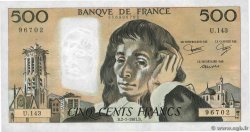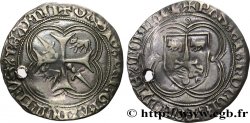Live auction - bfe_517314 - FRANCHE-COMTÉ - ARCHBISHOPRIC OF BESANÇON - ANONYMOUS Denier anonyme ou estévenant
You must signin and be an approved bidder to bid, LOGIN TO BID. Accounts are subject to approval and the approval process takes place within 48 hours. Do not wait until the day a sale closes to register. Clicking on "BID" constitutes acceptance of the terms of use of cgb.fr private live auctions.
Bids must be placed in whole Euro amounts only. The sale will start closing at the time stated on the item description; any bids received at the site after the closing time will not be executed. Transmission times may vary and bids could be rejected if you wait until the last second. For further information check the Live auction FAQ
All winning bids are subject to a 18% buyer’s fee.
All winning bids are subject to a 18% buyer’s fee.
| Estimate : | 350 € |
| Price : | 200 € |
| Maximum bid : | 200 € |
| End of the sale : | 29 January 2019 16:02:52 |
| bidders : | 1 bidder |
Type : Denier anonyme ou estévenant
Date: 1180-1225
Date: n.d.
Mint name / Town : Besançon
Metal : silver
Diameter : 16,5 mm
Orientation dies : 10 h.
Weight : 0,76 g.
Rarity : R2
Coments on the condition:
Ce denier est frappé sur un flan assez large et irrégulier. Exemplaire recouvert d’une patine grise et présentant des faiblesses de frappe
Catalogue references :
Obverse
Obverse legend : PTHOM-ARTIR, (LÉGENDE COMMENÇANT À 7 HEURES).
Obverse description : Dextre bénissante portant un annelet légende commençant à 6 heures.
Obverse translation : (Protomartyr).
Reverse
Reverse legend : + VESONTIVM, (N ET T BOULETÉS).
Reverse description : Croix cantonnée de quatre annelets ; à l’extrémité de chaque branche un globule.
Reverse translation : (Besançon).








 Report a mistake
Report a mistake Print the page
Print the page Share my selection
Share my selection Ask a question
Ask a question Consign / sell
Consign / sell










